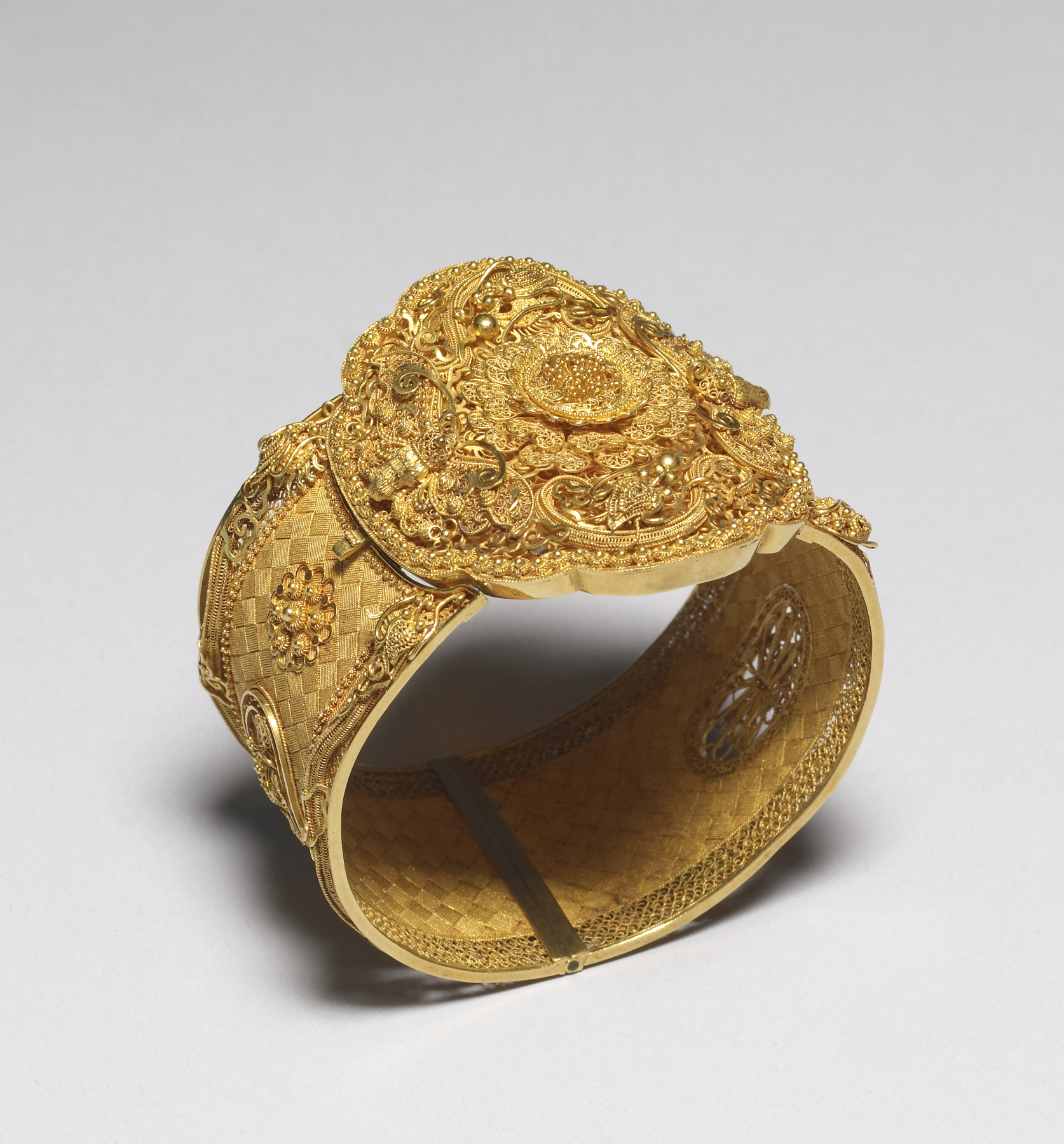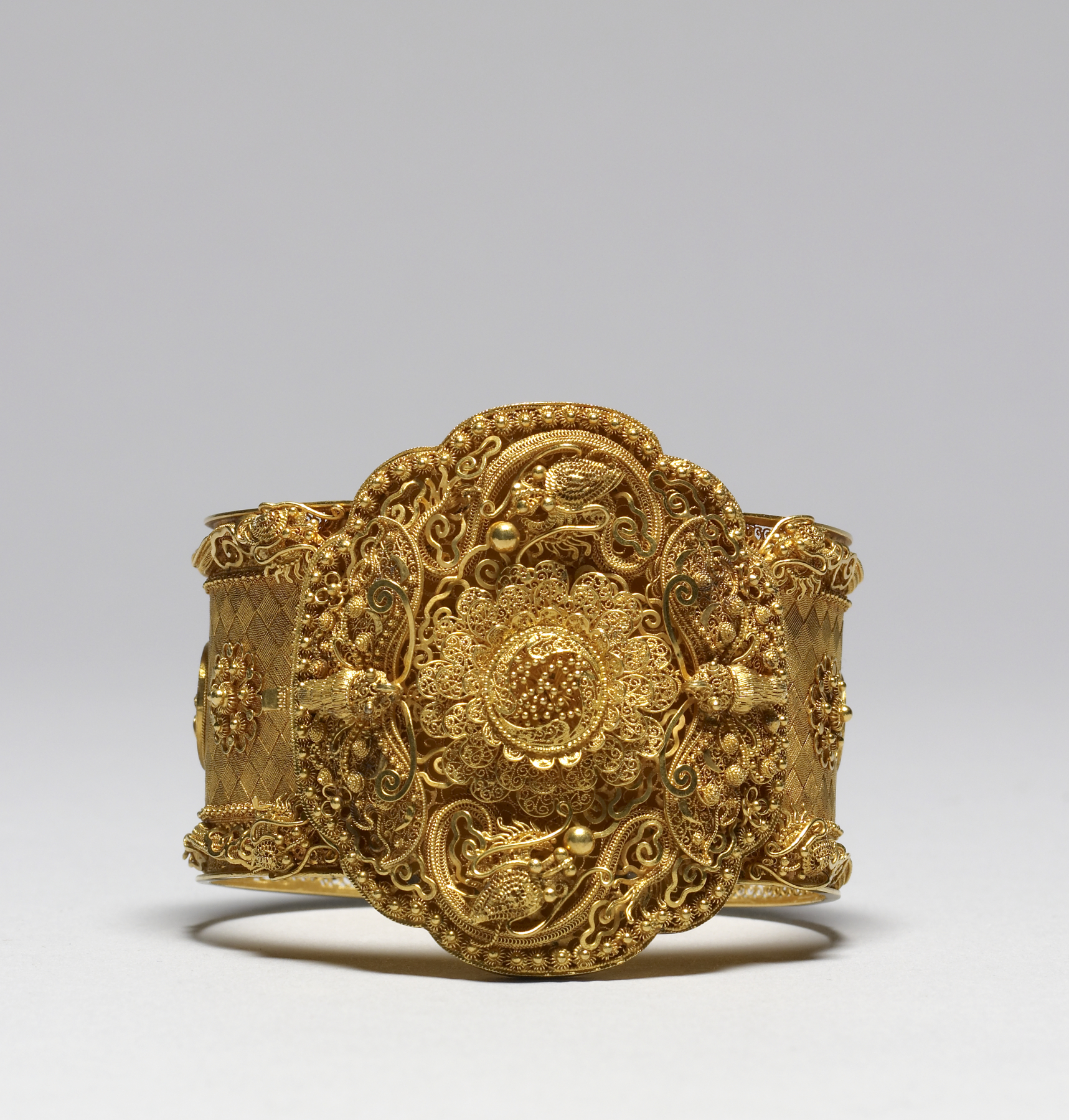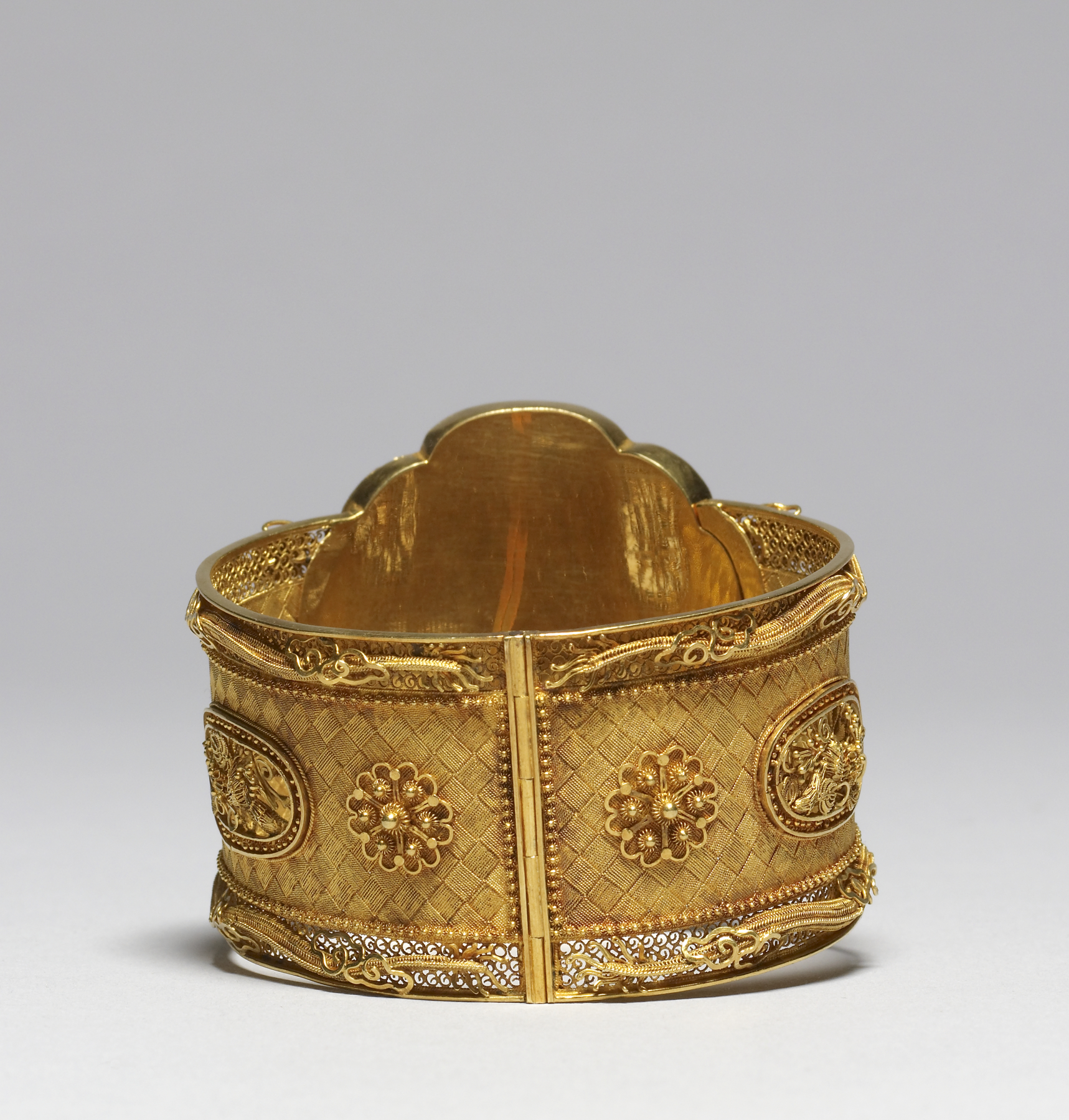Cannetille Ware Bracelet
During the period of peace after the Napoleonic Wars, the sumptuous arts experienced rapid recovery and gold once again became more reasonable. In England and France there emerged in the 1820s and early 1830s a taste for filigree jewelry known as cannetille work. Why these countries, with no previous history of filigree jewelry, should suddenly adopt this taste remains somewhat a mystery. It has been suggested that veterans of the Peninsular Wars returned from Portugal with examples of filigree jewelry for which that country was famous or that examples of filigree were arriving in western Europe as India was opened to commerce.
This is an excellent, rather sumptuous example of cannetille work, which is more generally found in brooches or parures. The gold is of an attractive warm color suggesting some iron was used in the alloy.
Provenance
Provenance (from the French provenir, 'to come from/forth') is the chronology of the ownership, custody, or location of a historical object.
Mr. George Harold Edgell [date and mode of acquisition unknown]; Mrs. Jean Walters Delano Edgell [date and mode of acquisition unknown]; Mr. Henry Walters Edgell, Manchester, New Hampshire [date and mode of acquisition unknown]; Mrs. Elizabeth Edgell, February 9, 1986, by gift [from her husband, Mr. Henry Walters Edgell]; Walters Art Museum, 2010, by gift.
Exhibitions
| 2006-2009 | Bedazzled: 5,000 Years of Jewelry from the Walters Art Museum. Frist Center for the Visual Arts, Nashville; The John and Mable Ringling Museum of Art, Sarasota; The Walters Art Museum, Baltimore. |
Geographies
France (Place of Origin)
Measurements
H: 2 x Diam: 2 1/2 in. (5.08 x 6.35 cm)
Credit Line
Gift of Mrs. Elizabeth Edgell, 2010
Location in Museum
Not on view
Accession Number
In libraries, galleries, museums, and archives, an accession number is a unique identifier assigned to each object in the collection.
In libraries, galleries, museums, and archives, an accession number is a unique identifier assigned to each object in the collection.
57.2332






